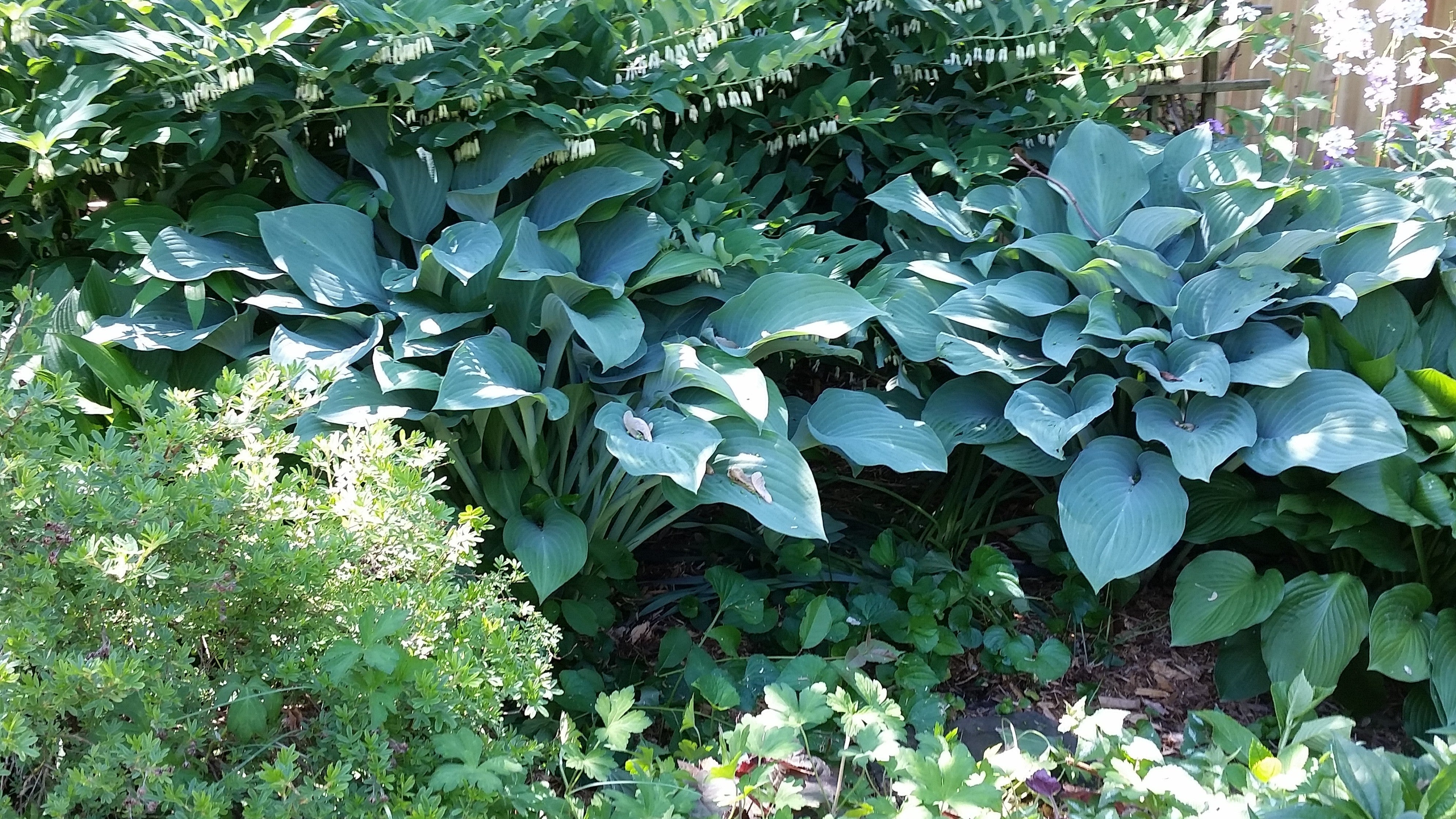Menu

Yes! There are Better Groundcovers!
Groundcovers the good and the bad
Ground covers serve some very useful purposes in our gardens, but many of the ground covers sold in the landscape trade in the past have been invasive species. We are working to get away from that, but it involves everyone stepping up. At Plants in the City, our approach is to educate and offer alternatives.
Why you might want a ground cover
In your garden you really shouldn't just leave bare soil between your plants. That invites weeds to blow in on the wind and get rooted. It also exposes your delicate soil life to the sun, which will kill the critical living creatures in the top layers. So, you could, every year, pile on loads of mulch. Yes, this will work to control weeds, but you end up with a garden of individual plants rather than a melded whole. Personally, and I admit it is simply a preference, I prefer a garden where every plant seems to nudge up against its neighbours, where the plants find their own place over time. To do that, you need to have plants growing at different times and heights in the garden. A ground cover is key to weaving it all together.
What are the problems with groundcovers?

Unfortunately, many of the groundcovers traditionally offered by the landscape industry are turning out to be invasive. For instance, in this picture, the nice green floor providing a dark green background is English Ivy! An invasive species isn't simply one that spreads. Nor is it one that simply comes from another bioregion. It is a species that spreads in such a way as to cause harm to the ecosystem. Often this is because of a lack of local predators to control them.
What kind of problem is caused in the ecosystem? Let me explain. We all know the story about monarch butterfly larva needing milkweed to eat. This is a completely normal situation. Almost all insects have a very narrow diet requirement of plants in the region where they mutually evolved. Other plants, even local ones, would be poisonous to them. And their plants would be poisonous to other insects. So, if one plant from another bioregion is able to out compete a local one, it is almost certainly going to impact a set of insects. If you impact the insects, you impact the birds, and so on up the food chain. Unfortunately, many of the groundcovers traditionally offered by the landscape industry are turning out to be invasive.
Now that we know better, we can do better.
Here are some native options
There are loads and loads of different native plants available now. By definition, a native plant cannot be invasive. But, it can certainly be an aggressive spreader. This is, usually, what we want from a ground cover.

Northern Maidenhair Fern (Adiantum pedatum)
Spreads slowly by shallow rhizomes. Found naturally in humus rich woodlands, so it likes a well drained acidic to neutral soil, in part sun or shade. Does not like clay.

Canada Anemone (Anemone canadensis)
Blooms in mid-spring or early summer with white flowers that have yellow centers. Can be very aggressive, and thrives in rich moist organic soil with full sun or part sun.
Bearberry (Arctostaphylos uva-ursi)
Evergreen ground cover with small white bell shaped flowers and small berries in the fall. The leaves turn bronzy in the fall. It is very salt tolerant, but can be difficult to transplant and establish. It requires an acidic sandy soil.

Canadian Wild Ginger (Asarum canadense)
Matt green heart shaped leaves hide flowers at ground level. It is a shade loving, and native to Ontario woodlands. Spreads by rhizomes. This should not be confused with culinary ginger, although First Nations people did dry the roots for use.
Palm Sedge Grass (Carex muskingumensis)
A cool season semi upright grass that forms a clump with a cascading look. Divided lives give a tropical appearance. Prefers partial to full shade in moist well drained soil.

Oak Sedge (Carex pansylvanica)
A small clump forming sedge with a mounding cascading habit. For some reason this has become the darling of ground cover choices, particularly for lawn replacement. Do not kid yourself that it will look like the smooth lawn you wished you had - see where it said clumping and mounding? However, it is a great ground cover and grows in a variety of situations from full sun to full shade.
Bunchberry (Cornus canadensis)
You may recognize this from along the sides of walking paths in provincial parks. It spreads slowly by underground runners and by seed. Prefers full to partial shade. I do not find this plant to be aggressive enough to fill in between other plants in a garden, but it is lovely to create a patch of it to green of the floor among some trees.
Hay Scented Fern (Dennstaedtia punctilobula)
This deciduous fern may be too aggressive for most gardens: it spreads aggressively by rhizomes. It may brown if it dries out in the heat of summer.

Woodland Strawberry (Fragaria vesca) and Virginia Strawberry (Fragaria virginiana)
I'm lumping these two together, because I find it so difficult to even tell them apart. They grow naturally in fields, woodland borders, stream banks and meadows. They spread by runners whose small plants can be separated and planted elsewhere. Fragaria virginiana prefers more sun (full to partial) and Fragarai vesca perfers less sun (partial to shade).
Wild Geranium (Geranium maculatum)
Also called spotted cranesbill. This plant grows naturally in woodlands or shaded areas and has dark green leaves and pale pink to lilac flowers. Of course, if will flower more with more sun!

Sensitive Fern (Onoclea sensibilis)
Sensitive fern has broad smooth pale green fronds and spreads along creeping rhizomes. In the wild you'll find it in swamps, open meadows and open woods. I like it's bright green colour and funky reproductive fronds.

Prickly Pear (Opuntia humifusa)
Did you know that we have a native cactus? Yes, and it has serious prickles, so beware! It is evergreen and very drought tolerant, and may even grow you some edible fruit.
Sourcing Native Groundcovers
This can sometimes be a challenge, especially in smaller sizes that you would want to keep costs within budgets. Usually, small sizes (flats of 50 plugs) are more available in the early season, and larger sizes in the later season. Please give us a call to discuss your needs, and we will check with our suppliers to find the best deal for your garden needs.
and finally
Also, please be kind to nursery personnel who are struggling to deal with the changes in the industry surrounding ground covers or any invasive species. I remember being a new employee in May on the store floor in a large retail nursery. I had formal horticultural education, but I was struggling to just recognize all the names people use for all the plants! We are all working together to learn and improve. Vote with your dollars, and perhaps speak to the store manager. For my part, I'm always happy to learn more, and if I make an error, happy to have it pointed out and corrected. This is how we can learn from each other, and move forward without spreading invasive species and the problems they cause.
- Choosing a selection results in a full page refresh.

